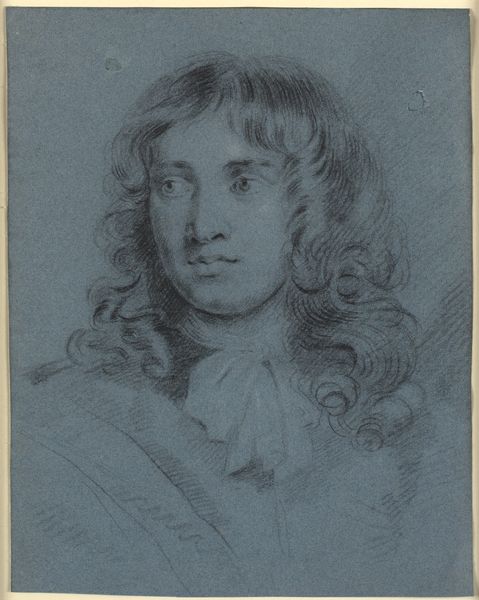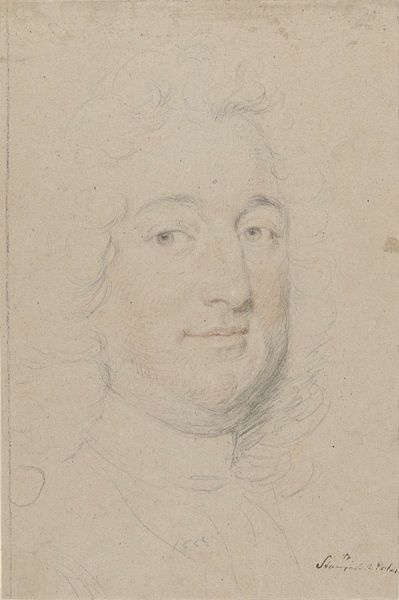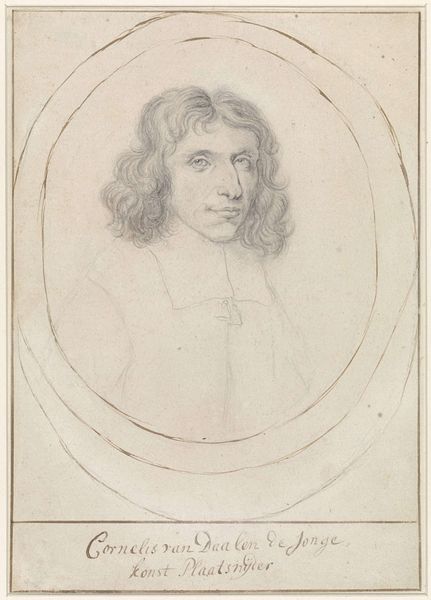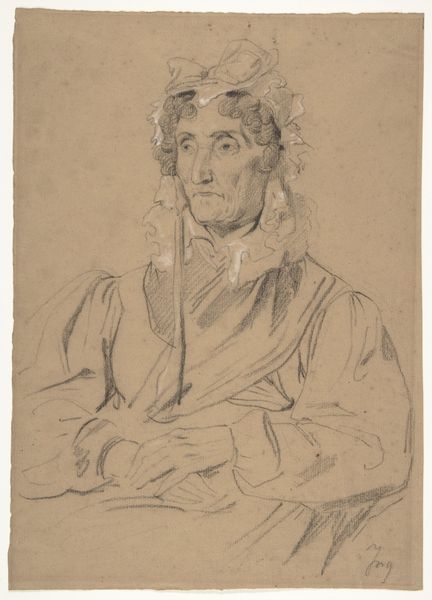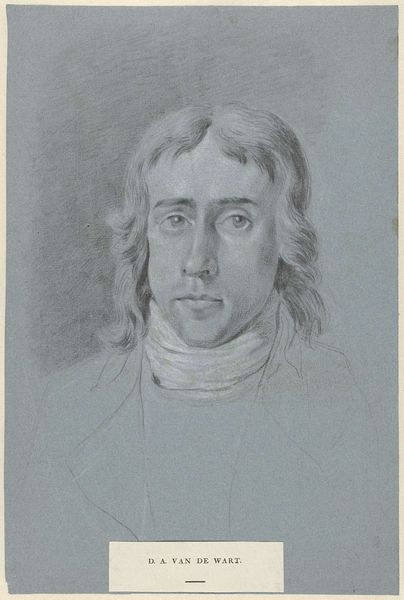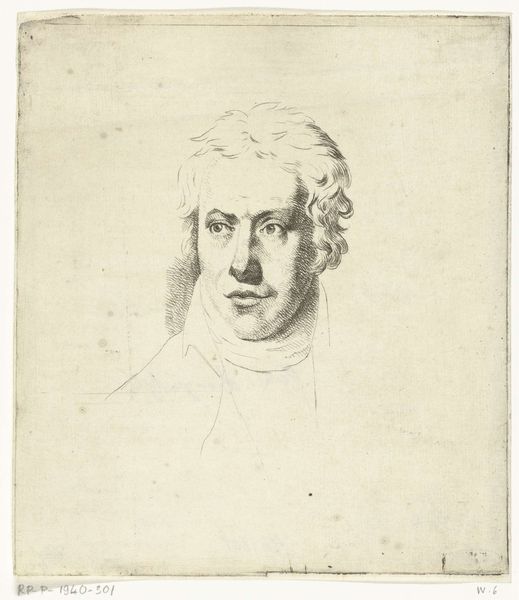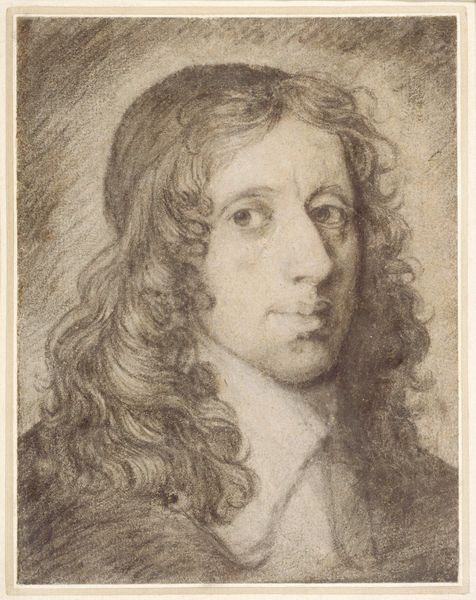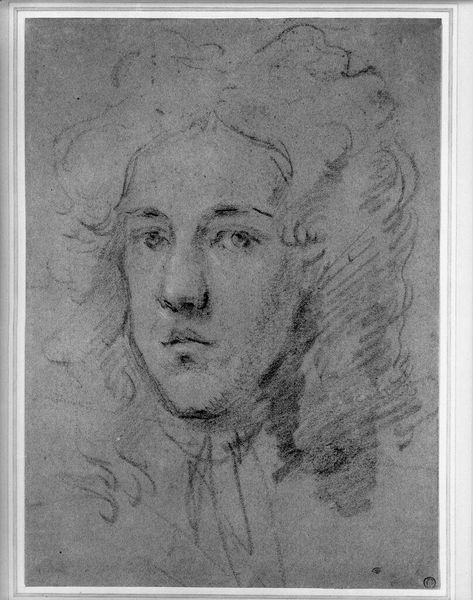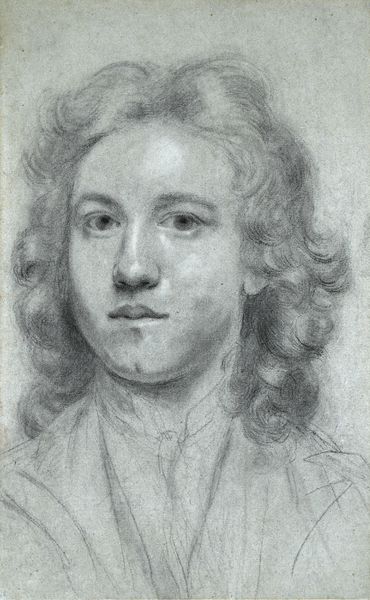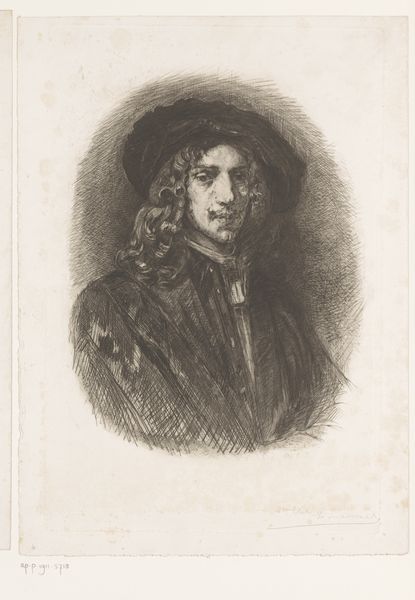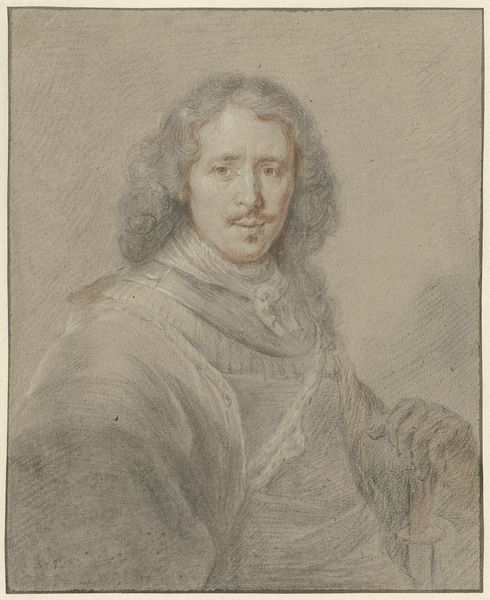
Dimensions: support: 456 x 280 mm
Copyright: CC-BY-NC-ND 4.0 DEED, Photo: Tate
Curator: This is Joseph Wright of Derby's "Study of an Unknown Man," currently held in the Tate Collections. Editor: Immediately, I'm struck by the warmth of the sanguine chalk. It imbues the sitter with a certain vitality, wouldn’t you agree? Curator: Absolutely. Wright was a master of light, even in preparatory drawings. The almost theatrical lighting suggests a figure of some importance. Editor: Or perhaps someone aspiring to it. That slightly self-conscious gaze feels…constructed. The wig, the hinted-at cravat—symbols of status, wouldn't you say? Curator: Precisely. Wright often depicted Enlightenment figures, scientists and philosophers. This study may reflect the era's burgeoning middle class and its pursuit of knowledge and social mobility. Editor: A visual representation, then, of changing societal dynamics, captured in a single portrait study. Curator: Indeed, and that is just the beginning. Editor: I will ponder the way this singular individual captures a much wider story.
Comments
tate 7 months ago
⋮
http://www.tate.org.uk/art/artworks/wright-study-of-an-unknown-man-t08244
Join the conversation
Join millions of artists and users on Artera today and experience the ultimate creative platform.
tate 7 months ago
⋮
Previously thought to be a seventeenth-century portrait sketch, this drawing is now attributed to Joseph Wright of Derby. Recent analysis of the paper has shown that it dates from the period c.1747-57, making the earlier identification impossible. It is now believed to be a studio drawing executed by Wright while a student in the London studio of the portrait painter Thomas Hudson. It is probably a copy made after either a print or a painting by the seventeenth-century artist Sir Peter Lely. Copying the work of past masters was a recognised student exercise, and Hudson had a large collection of paintings, drawings and prints for Wright to make use of. Gallery label, September 2004
